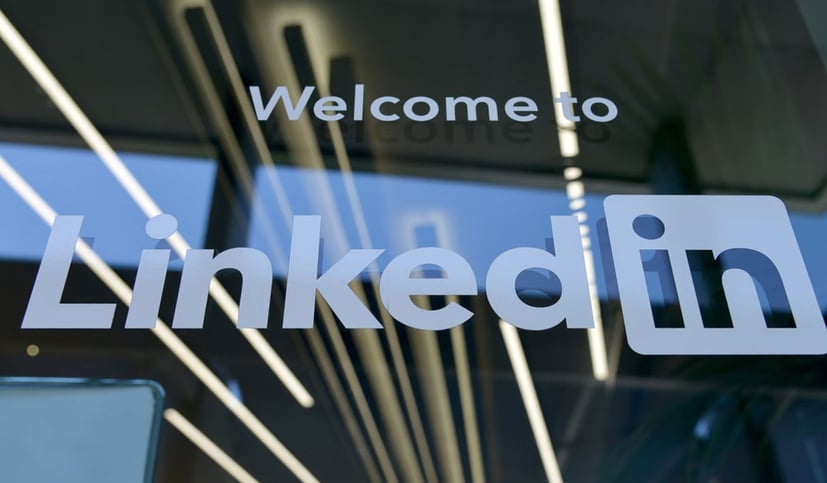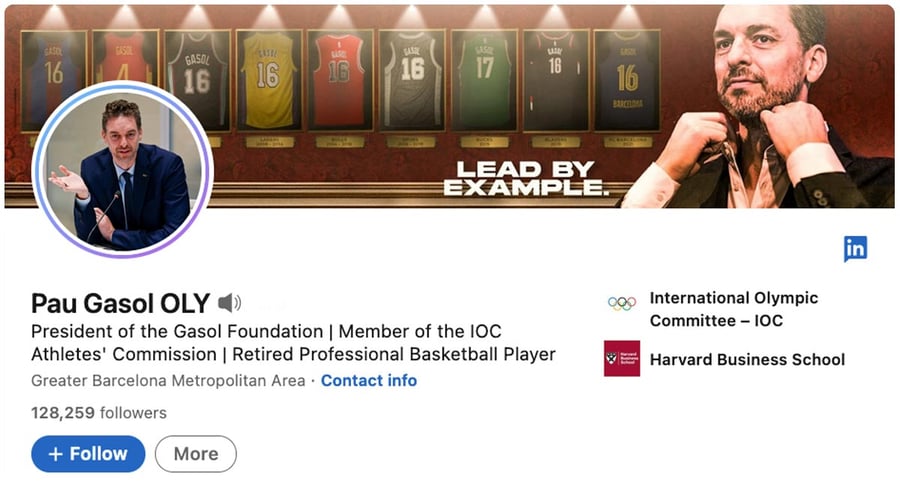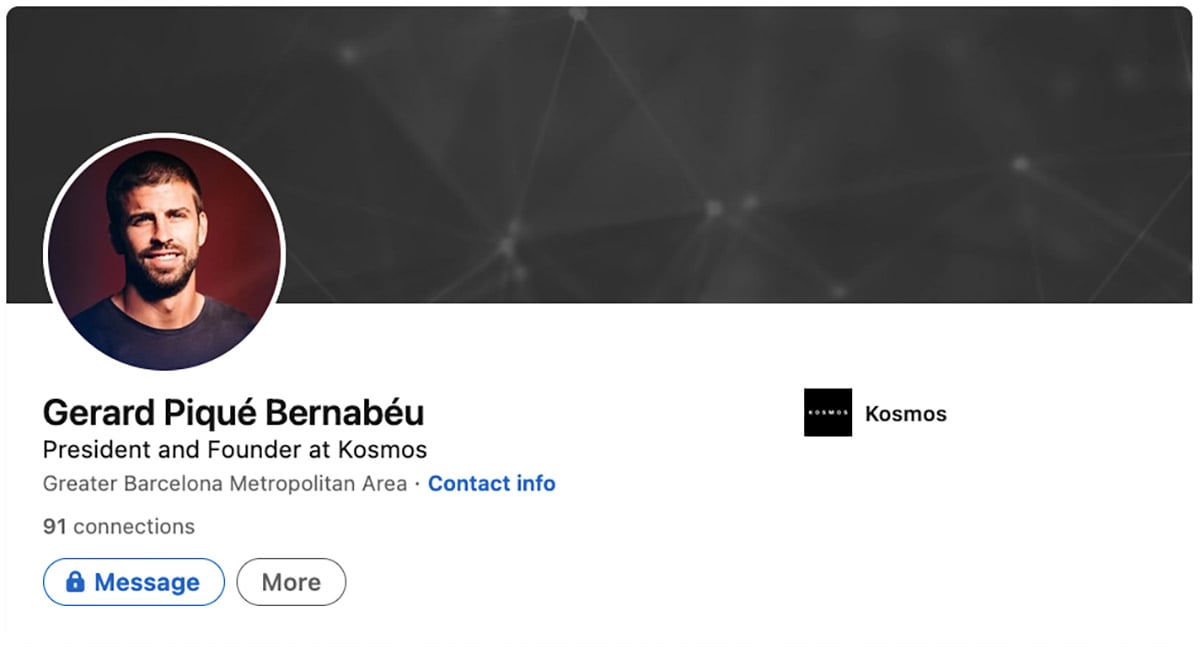Search the latest and greatest job opportunities in sport
 Linkedin, a network with 800 million users worldwide, allows athletes to showcase their personal brand, network and approach the professional world of the sports industry from an active perspective, but it is an area in which they are still amateurs.
Linkedin, a network with 800 million users worldwide, allows athletes to showcase their personal brand, network and approach the professional world of the sports industry from an active perspective, but it is an area in which they are still amateurs.
Social networks have brought athletes closer to public opinion. The news in the media and the content shared by the entities and sponsors that represent them are, by no means, their only showcase to the world. Nowadays, athletes are autonomous when it comes to showing what they do professionally or personally. The vast majority opt for platforms such as Instagram, TikTok, Facebook or Twitter to maintain that communication with their community, and turn to Linkedin when their role as an active athlete fades away to make way for a new career in management. Those who understand that Linkedin is a networking platform—the network par excellence of the sports industry as a business, which allows them to work on their personal brand and make new relationships long before the end of their sporting career—will cease to be amateurs in this area.

Pau Gasol has 128,259 followers on Linkedin.
It is revealing if we take as an example two great stars of international sport who have never, not even in their time as active athletes, neglected their profile as professionals beyond the field. Pau Gasol, one of the best basketball players in the world who retired after the Tokyo 2020 Olympic Games, has the attention of 7.2 million users on Twitter, 2 million followers on Instagram, and almost 5 million on Facebook; on Linkedin, where he presents himself as president of the Gasol Foundation and member of the IOC Athletes’ Commission, he has 128,056 contacts.
The attention that Gerard Piqué receives as a player of FC Barcelona and the Spanish national football team exceeds by millions the attention he receives as president, founder and CEO of Kosmos, a media agency specializing in the sports industry. Piqué has 20.2 million followers on Twitter, 19.6 million on Instagram, 25 million on Facebook and only 4,181 contacts on Linkedin.
 Gerard Piqué has 4,181 contacts on Linkedin.
Gerard Piqué has 4,181 contacts on Linkedin.
Johan Cruyff Institute encourages students, many of them active or recently retired athletes, to discover this platform “long before they need it”, says Rosaura Alastruey, professor of the Master in Sport Management in Barcelona. “Linkedin is a platform that will allow us to create our personal brand, but especially if we don’t see it as a replica of a CV, a job bank or a database. Linkedin has to go a little further.” In this interview, Rosaura helps us to discover the potential of Linkedin, the gateway to the world of sport as a business.
Gradually there are more and more professional athletes on Linkedin. Would you say that they are doing well in this area or are they still ‘amateurs’ in this field?
It is true that at Johan Cruyff Institute we are committed every year to teaching students the importance of working this platform, but not only because they are athletes, but also because people, unfortunately, use this platform too late, when they need it and want immediate results.
“At Johan Cruyff Institute we are commited to teaching students the importance of working this platform; people use this platform too late, when they need it and want immediate results”
As athletes, they have opted more for working on other networks such as Twitter, Instagram or TikTok, to create their community of followers because there they can show their scores and times, their trajectory. But lately, and I was reading this the other day on a Linkedin page called ‘El míster’ (‘The coach’), there are many examples of athletes and former athletes who are beginning to see Linkedin as a place where, once their sporting career is over, they can start to get closer to the professional world, make contacts, look for sponsors for future projects… Although we are in an amateur phase, as they say in sport, by practicing they can stop being amateurs.
What can an athlete find on a network like Linkedin and what can he/she contribute?
Linkedin is a networking platform where athletes can find information about their sports sector, what clubs, brands and entities are doing; about the projects they are doing or those they are going to do in the future at a global level, which is the advantage of Linkedin being global. And, in addition to being informed about your sector and other sectors, you can contribute your knowledge, your work, your personal brand, and, most importantly, on Linkedin you can help other people who are also on that network.
Is it a good platform to work on your personal brand?
Of course, it is. I would never say it is the best because it will depend on whether my target audience is on this platform or not, but the figures say so. At the moment, Linkedin has 800 million users. We started Covid-19, in March 2019, with 640 million, and another figure that reflects this is that every second of the day, and I don’t know if anyone has counted them, there are 86,400, between 2 and 3 different people register every day. It is a platform that will allow us to create our personal brand, but above all if we do not see it as a replica of our CV. Linkedin has to go a bit further. But, apart from that, Linkedin and Google are very close friends. When someone talks about you, when people are interested in a professional, in most countries the first thing they will do is google you and almost always the first result that appears is your Linkedin profile.
“When someone talks about you, the first thing they will do is google you and almost always the first result that appears is your Linkedin profile”
Is a professional valued, in part, by his or her network of contacts?
Increasingly, a professional’s network of contacts is a growing asset. In the past, perhaps making contacts was more for salespeople or managers, whose main activity was to network and look for business. Nowadays, if I have two candidates with the same professional profile, with the same studies, with the same experience, if one provides me with contacts and the other does not, it can obviously be a clear exponential value.
What should your Linkedin profile explain?
For me, the Linkedin profile cannot be seen as a CV because we are only getting 25% of its potential. The Linkedin profile is a perfect showcase that puts us in the market long before we are even looking for business or looking for a job. We must take advantage of the visibility it gives us, and it is also a perfect loudspeaker to reach people who, even without knowing us, can start to see us.
“The most important thing is to understand that Linkedin is not a job board, it’s not a database, it’s about networking and it’s about creating those relationships before you need them, but above all, it’s about maintaining those relationships”
Tell us some tips on how to use it well.
The most important thing is to understand that Linkedin is not a job board, it’s not a database, it’s about networking and it’s about creating those relationships before you need them, but above all, it’s about maintaining those relationships. I can give you three tips.
1. The professional profile is the gateway to Linkedin, but nowadays, having an empty profile, without it being optimized so that when people search for me they find me, is more damaging than not having one at all.
2. Let’s not get obsessed with the number of contacts. I’m not going to say what is too many or too few, it’s a personal choice, but every contact we make on Linkedin we should keep it alive and relate to it. And that takes time.
3. It requires an investment of time, but in a strategic way. We must be clear about what we are on Linkedin for, whether to look for a job or to look for clients and, from here, the actions we take must be strategic and, above all, constant.
What content works best on Linkedin?
Good question. I should tell you professional content because it’s a professional network, but sometimes users surprise you and, even if the posts are professional, they’re made by people. So, combining a bit of professional day-to-day stuff, even if it’s not so much an article or a list of resources, is fine, but it’s not a network like Facebook. I recommend that 80% of the content should be professional, above all based on what we want to demonstrate, that we are experts in a subject, but if we introduce something more personal it wouldn’t be bad either.
This article was originally published by Global Sports partner the Johan Cruyff Institute and can be viewed here.
Search the latest and greatest job opportunities in sport
One of the many key success factors when assessing the quality of degree programmes is the employability rate of its gra...
Read moreThe global major event industry is one of the most thrilling and impactful career paths you can choose. If you’re lookin...
Read moreStarting his career in New Zealand within sports events, Regan gained valuable experience with Hockey New Zealand and Ne...
Read more